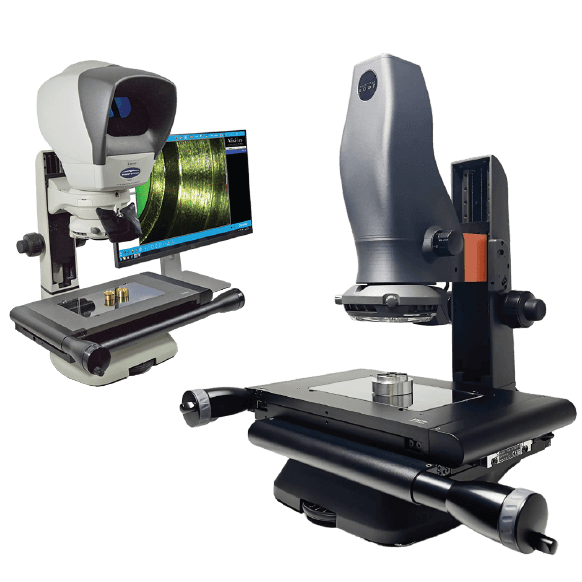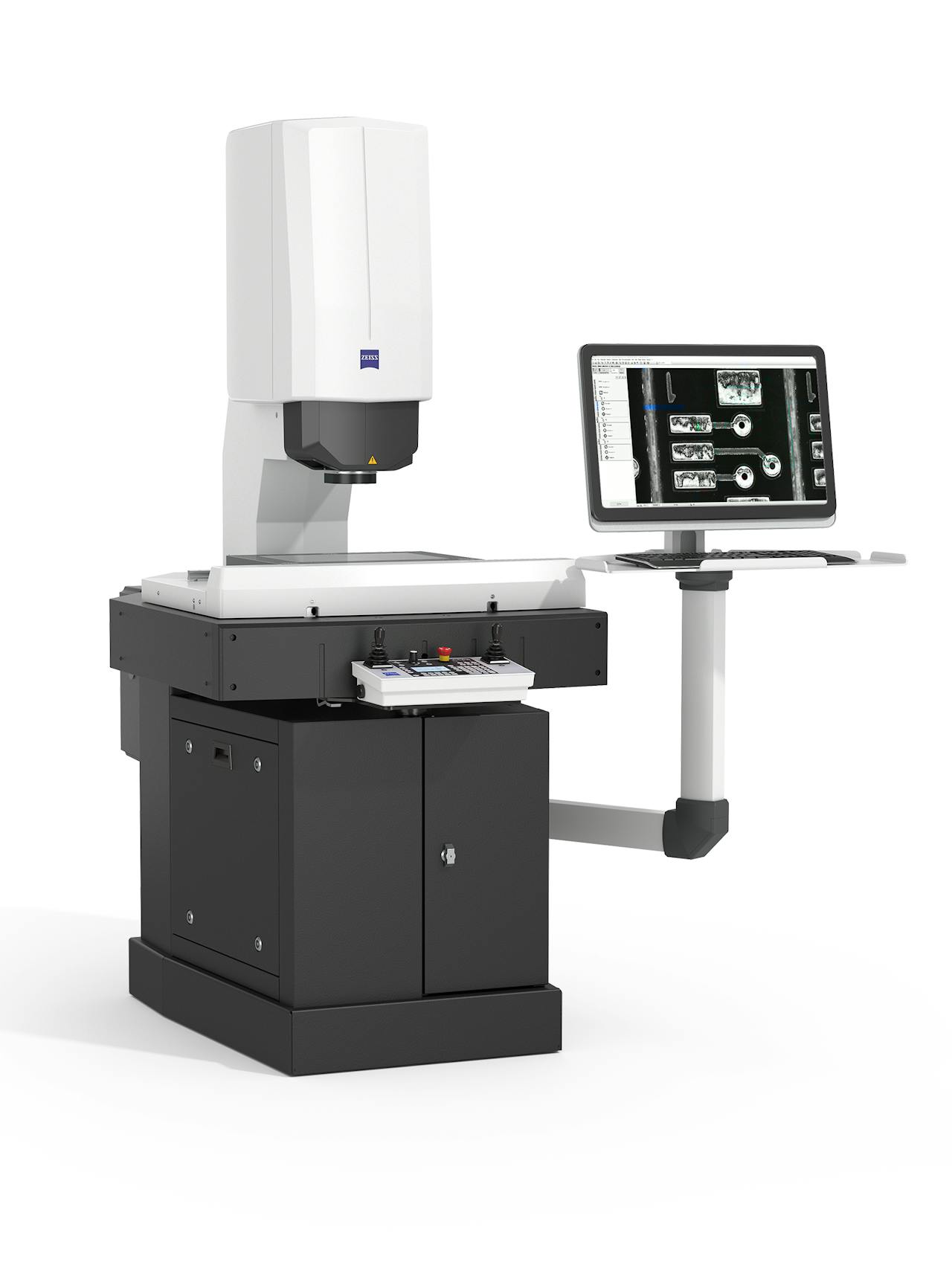The Role of Optical Measurement Equipments beforehand Metrology Techniques
Optical measurement systems have actually changed metrology, bringing a degree of precision that was once unbelievable. You may be surprised to find out just how these innovations, based upon fundamental concepts like representation and disturbance, are used across various sectors. Their non-contact capabilities not only boost accuracy but likewise improve processes. As you discover better, you'll uncover exactly how these systems are shaping the future of dimension and quality assurance.
The Advancement of Metrology: A Historical Viewpoint
As you discover the background of width, you'll discover that its evolution shows humanity's pursuit for precision and standardization. From old people using body parts as devices of dimension to the advancement of standard weights and steps, each step reveals our desire for precision. The Egyptians constructed the pyramids making use of accurate dimensions, while the Romans progressed engineering with their advanced measuring tools.
Throughout the Renaissance, scientific developments moved the emphasis towards much more empirical approaches, leading the way for modern-day assessment. The introduction of the metric system in the late 18th century noted a significant landmark, establishing universal requirements. Throughout the 20th century, technical innovations additionally changed width, enabling extremely accurate measurements in various fields.
Today, assessment continues to develop, integrating digital modern technology and automation. This history highlights not just the importance of dimension yet also our ruthless quest of enhancing precision and uniformity in our increasingly complex world.
Concepts of Optical Dimension Equipments
Comprehending the concepts behind optical dimension systems is vital for precise outcomes in assessment. You'll want to take into account fundamental optical principles, measurement precision aspects, and effective system calibration strategies. Each of these elements plays an essential role in ensuring your dimensions are precise and reliable.
Fundamental Optical Principles
While discovering optical dimension systems, you'll run into essential optical principles that develop the backbone of accurate information purchase. Light acts in foreseeable ways, and understanding these behaviors-- like reflection, diffraction, and refraction-- is crucial for efficient measurements. You'll use lenses and mirrors to control light and focus it onto your target, guaranteeing precision in your analyses. Furthermore, the wave nature of light enables for interference patterns, which can boost measurement resolution. Polarization can likewise play a key function in distinguishing signal from sound, improving the quality of your results. By mastering these principles, you'll be equipped to utilize optical innovations effectively, leading the method for improvements in metrology and guaranteeing your dimensions are both dependable and repeatable.
Measurement Precision Factors
To achieve high measurement precision in optical systems, numerous elements come right into play, affecting the dependability of your results. High-quality lenses and detectors minimize aberrations and noise, guaranteeing your dimensions are precise. By resolving these aspects, you can enhance the total performance of your optical dimension systems, leading to even more exact and reliable results in your width applications.
System Calibration Methods
Accomplishing high measurement accuracy is only part of the equation; proper system calibration techniques are equally vital in optical measurement systems. Next off, utilize known measurements to validate the system's output and make necessary corrections. With these strategies, you'll boost the integrity of your optical dimension system.
Secret Technologies Behind Optical Measurement
Optical dimension systems rely on numerous vital modern technologies that enhance accuracy and efficiency in width. One necessary innovation is interferometry, which uses the interference of light waves to gauge little variations and surface area abnormalities with extreme accuracy. You'll likewise discover laser scanning systems, which capture thorough 3D information of objects swiftly, making them very useful for dimensional analysis.
Additionally, CCD and CMOS sensing units play a significant role in transforming light into electric signals, permitting high-resolution imaging and precise dimensions. Advanced algorithms for picture processing better boost measurement accuracy by assessing data in actual time, filtering out noise and boosting functions.
Finally, fiber optics give adaptability and the capability to gauge in challenging environments while keeping signal honesty. By leveraging these technologies, you can attain premium cause your assessment tasks, ensuring that your measurements are both reputable and exact.
Applications of Optical Dimension in Market
As industries progressively require precision and efficiency, the applications of optical dimension systems have actually ended up being essential throughout various markets. In manufacturing, these systems aid you keep track of measurements and resistances in real-time, making certain quality assurance without taxing hand-operated checks. In the automotive market, optical measurements aid in straightening components with precision, enhancing security and efficiency.
In electronic devices, you're making use of optical approaches to examine minute functions on circuit card, identifying issues that might result in failures. The aerospace sector advantages from non-destructive screening strategies, permitting you to analyze materials and elements without jeopardizing their integrity.
Optical measurement likewise plays a crucial function in textiles, guaranteeing material dimensions satisfy exact specifications. optical measurement systems. With their capability to supply high-resolution data rapidly, these systems empower you to make informed decisions, simplify procedures, and eventually drive advancement throughout your market
Enhancing Accuracy and Effectiveness in Measurements
When you think of boosting precision in dimensions, precision in your dimension strategies is important. By streamlining these procedures, you can accomplish quicker results without compromising quality. Allow's check out how adopting innovative optical dimension systems can raise both precision and performance in your work.
Precision in Dimension Techniques
Precision in measurement strategies is crucial for accomplishing dependable lead to metrology, particularly because small inconsistencies can result in substantial errors. By making use of innovative optical measurement systems, you can boost the accuracy of your measurements. These systems provide high-resolution information that help you find even the smallest variations in measurements. When you embrace these modern technologies, you decrease unpredictabilities and improve repeatability in your procedures. Furthermore, exact measurements enable you to keep quality assurance, ensuring that products satisfy stringent specs. This not only improves your reliability yet additionally improves customer fulfillment. Spending in accuracy measurement devices inevitably results in boosted performance, minimized waste, and maximized production cycles. index Embracing these methods will certainly change your approach to assessment, generating remarkable results.
Enhancing Dimension Procedures
To improve precision and effectiveness in measurements, improving your measurement processes is essential. Beginning by taking on optical measurement systems that give real-time information, minimizing the time invested in manual recording. These systems commonly integrate seamlessly with existing software application, enabling you to automate information collection and analysis.
Following, standardize your measurement protocols. By implementing regular treatments, you minimize irregularity and boost repeatability. Do not fail to remember to frequently calibrate your equipment to assure its precision.

The Impact of Optical Dimension on R & D
As scientists undertaking to push the borders of innovation, optical measurement systems have actually come to be important devices in the growth procedure. These systems provide you with exact, real-time data that enhances your capability to assess complicated products and frameworks. In numerous areas, from biotechnology to aerospace, you rely upon optical dimensions to enhance and maximize layouts item efficiency.

With high-resolution imaging and non-contact approaches, you can minimize sample disturbance, allowing for more accurate internet results. This capability to catch minute details accelerates your R&D cycle, allowing you repeat styles swiftly and successfully. Furthermore, optical measurement fosters collaboration throughout disciplines, as the information generated is frequently easily interpretable and shareable.
Inevitably, incorporating optical measurement systems into your research study not only boosts performance however additionally strengthens your understanding of the phenomena you study. By leveraging these innovative strategies, you're far better outfitted to introduce and stay in advance in an affordable landscape.
Future Fads in Optical Measurement Systems
With the quick innovation of innovation, you're likely to see significant shifts in optical dimension systems that will certainly redefine their application across various sectors. You'll observe an approach raised automation and integration of man-made intelligence, enabling real-time information analysis and improved accuracy. Miniaturization is one more trend; portable gadgets will certainly enable dimensions in tighter areas, making them perfect for areas like aerospace and biomedical applications.
Anticipate to see systems that can operate in challenging atmospheres, giving dependable measurements in extreme problems. As these modern technologies merge, you'll find that optical measurement systems not just enhance precision however additionally simplify process, ultimately driving innovation and effectiveness in your jobs.
Often Asked Concerns
Just How Do Optical Dimension Equipments Contrast to Typical Measurement Techniques?
Optical dimension systems provide higher precision and faster results compared to conventional techniques. You'll discover they catch more data points precisely, lowering human mistake and raising integrity, making them a recommended option in various applications.
What Industries Advantage Many From Optical Dimension Solutions?
You'll find industries such as aerospace, vehicle, and electronics benefit most from optical measurement systems. These markets count on accurate measurements to guarantee top quality and efficiency, boosting efficiency and reducing expenses through sophisticated technology.

Are Optical Measurement Solutions Expensive to Apply?
Optical measurement systems can be costly to execute, however their precision and performance typically justify the price. Purchasing such technology can bring about significant long-term savings and renovations in top quality throughout different applications.
What Abilities Are Called For to Operate Optical Measurement Solutions?
To run optical dimension systems, you'll need strong analytical skills, interest to detail, and proficiency in software program tools. Experience with optics and an understanding of dimension concepts will likewise improve your efficiency and performance.
How Do Ecological Aspects Affect Optical Measurements?
Environmental variables like temperature level, air, and moisture quality can misshape optical measurements. You'll discover variations in accuracy due to light interference or refraction. optical the original source measurement system. Keeping steady problems is necessary for dependable and specific optical measurement outcomes
Final thought
In recap, optical measurement systems are changing width by supplying unrivaled precision and effectiveness. By taking advantage of sophisticated concepts and innovations, these systems boost accuracy while decreasing disruptions in different sectors. As you check out future patterns, you'll see exactly how the integration of AI and automation will certainly continue to elevate dimension techniques, driving innovation and improving quality assurance. Accepting these advancements will certainly be crucial for remaining competitive and attaining quality in your field.
Attaining high measurement precision is only part of the formula; correct system calibration methods are just as essential in optical dimension systems.When you think about boosting precision in measurements, precision in your dimension techniques is vital. By using sophisticated optical dimension systems, you can improve the precision of your measurements.To improve accuracy and efficiency in dimensions, streamlining your measurement procedures is necessary. Just How Do Optical Dimension Systems Compare to Typical Measurement Techniques?